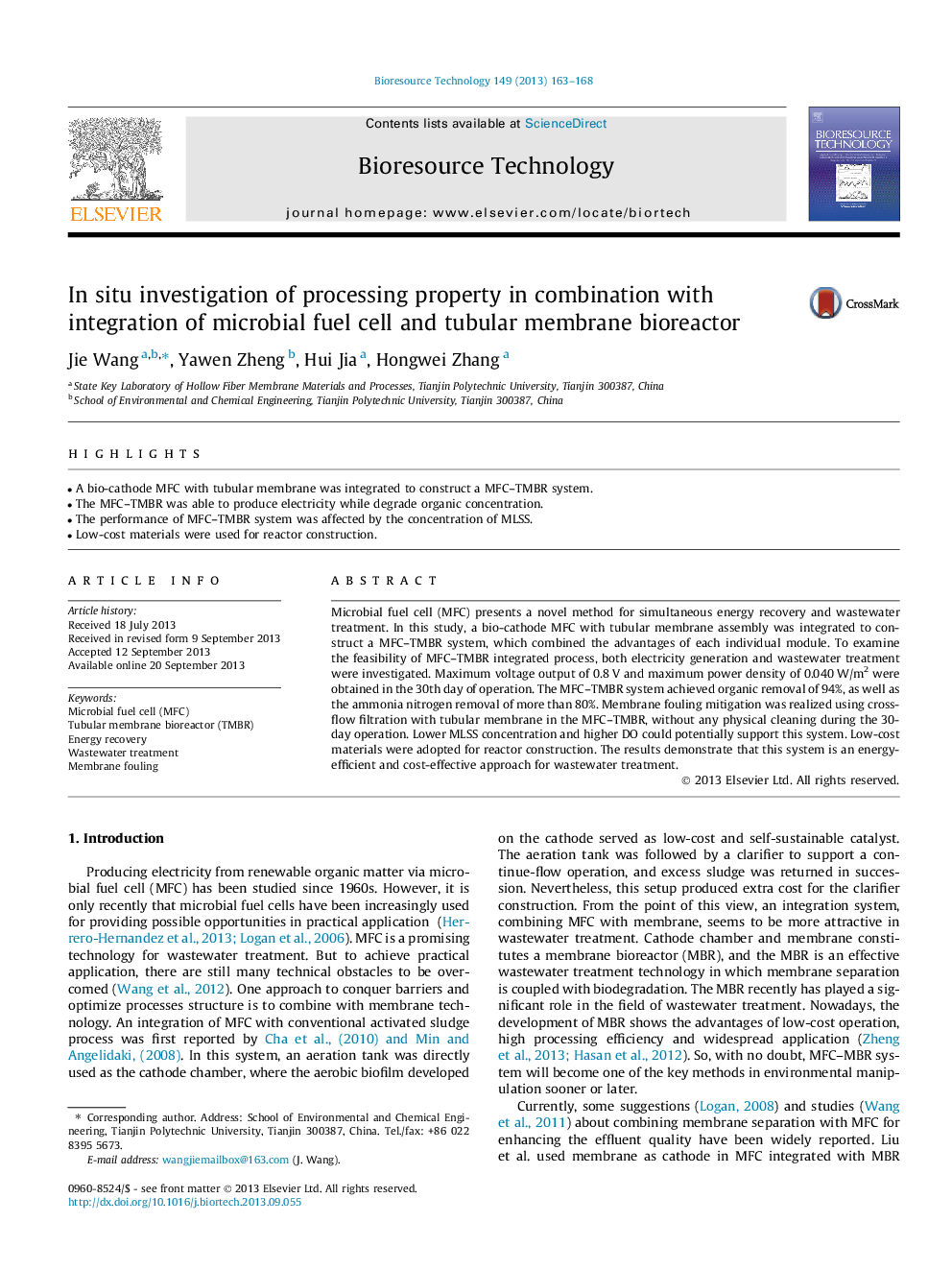| Article ID | Journal | Published Year | Pages | File Type |
|---|---|---|---|---|
| 7080122 | Bioresource Technology | 2013 | 6 Pages |
Abstract
Microbial fuel cell (MFC) presents a novel method for simultaneous energy recovery and wastewater treatment. In this study, a bio-cathode MFC with tubular membrane assembly was integrated to construct a MFC-TMBR system, which combined the advantages of each individual module. To examine the feasibility of MFC-TMBR integrated process, both electricity generation and wastewater treatment were investigated. Maximum voltage output of 0.8Â V and maximum power density of 0.040Â W/m2 were obtained in the 30th day of operation. The MFC-TMBR system achieved organic removal of 94%, as well as the ammonia nitrogen removal of more than 80%. Membrane fouling mitigation was realized using cross-flow filtration with tubular membrane in the MFC-TMBR, without any physical cleaning during the 30-day operation. Lower MLSS concentration and higher DO could potentially support this system. Low-cost materials were adopted for reactor construction. The results demonstrate that this system is an energy-efficient and cost-effective approach for wastewater treatment.
Related Topics
Physical Sciences and Engineering
Chemical Engineering
Process Chemistry and Technology
Authors
Jie Wang, Yawen Zheng, Hui Jia, Hongwei Zhang,
